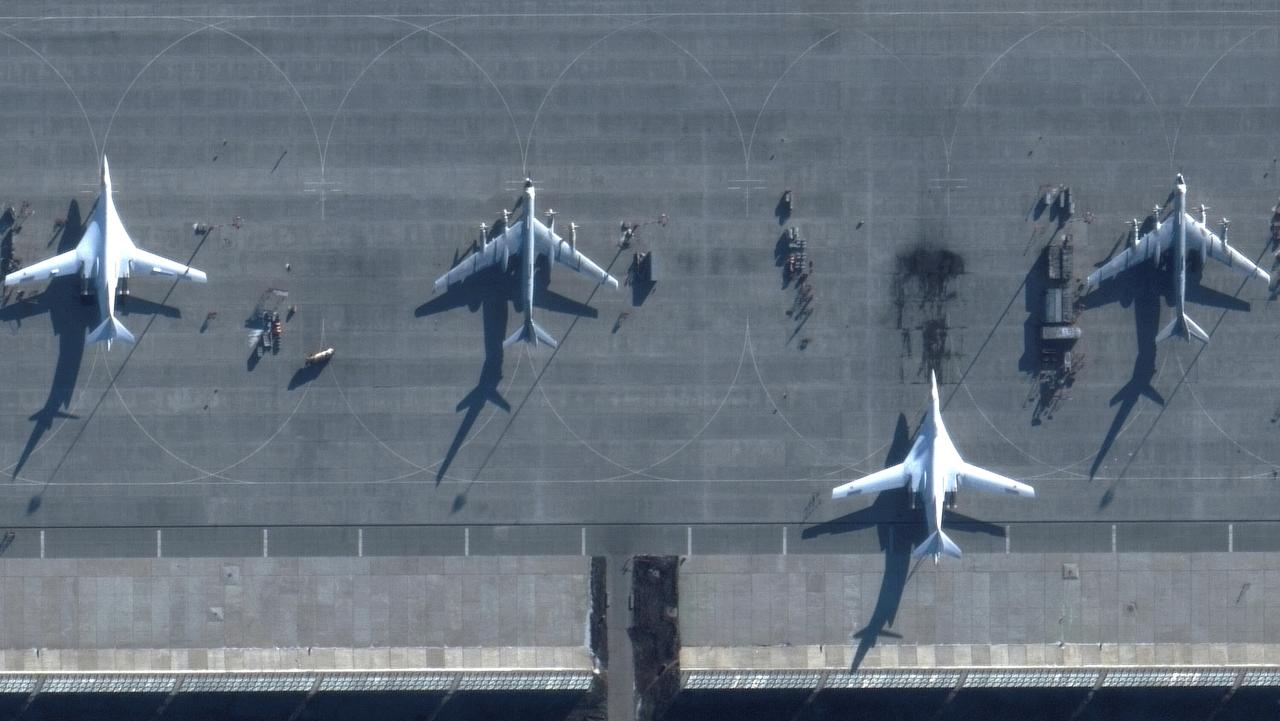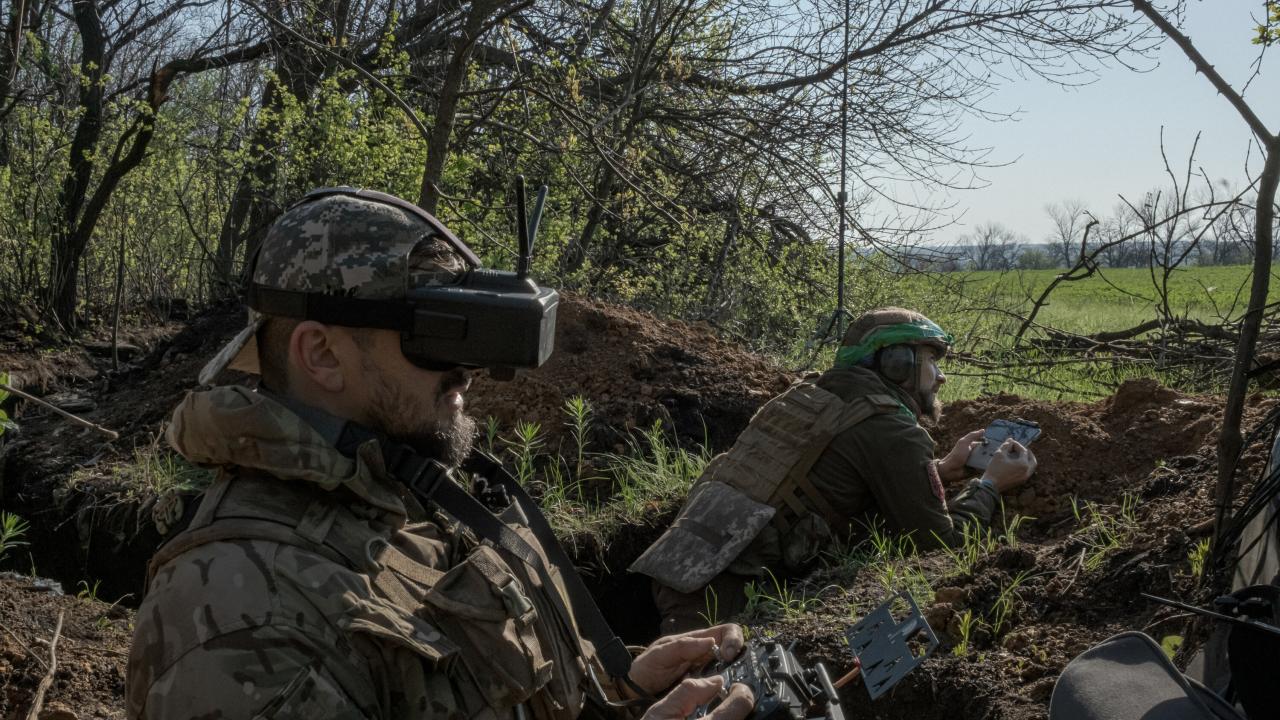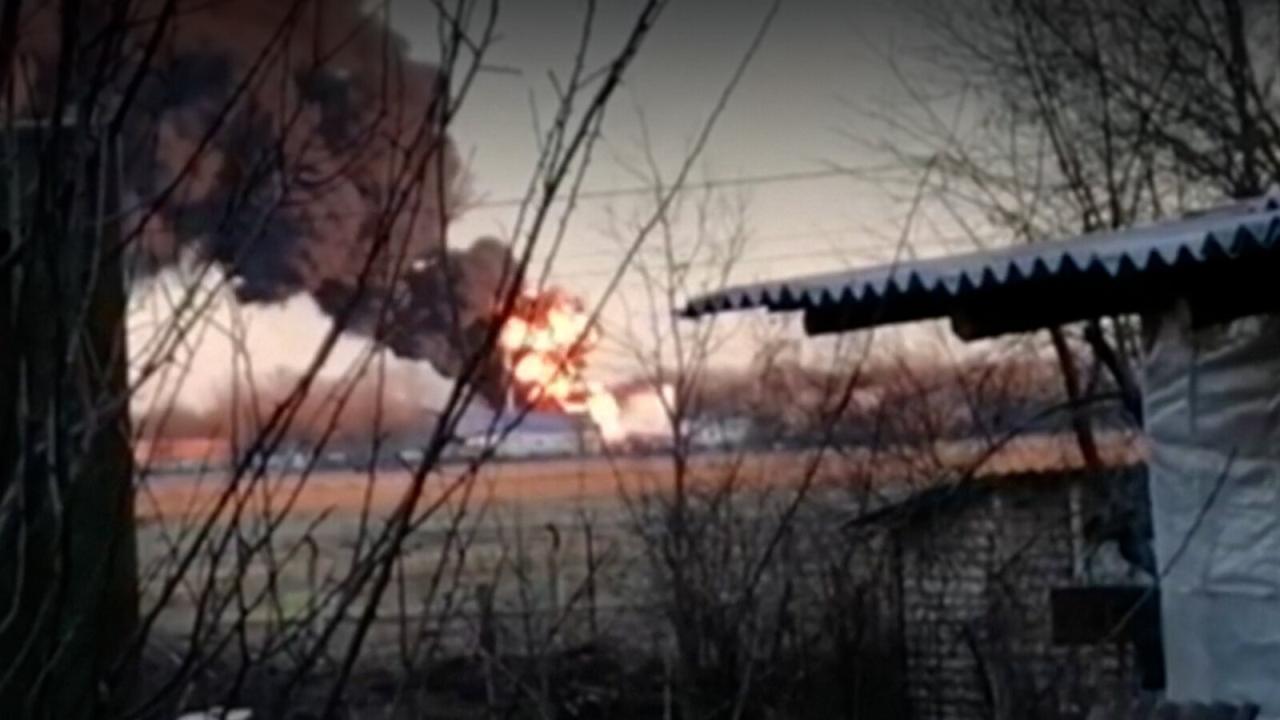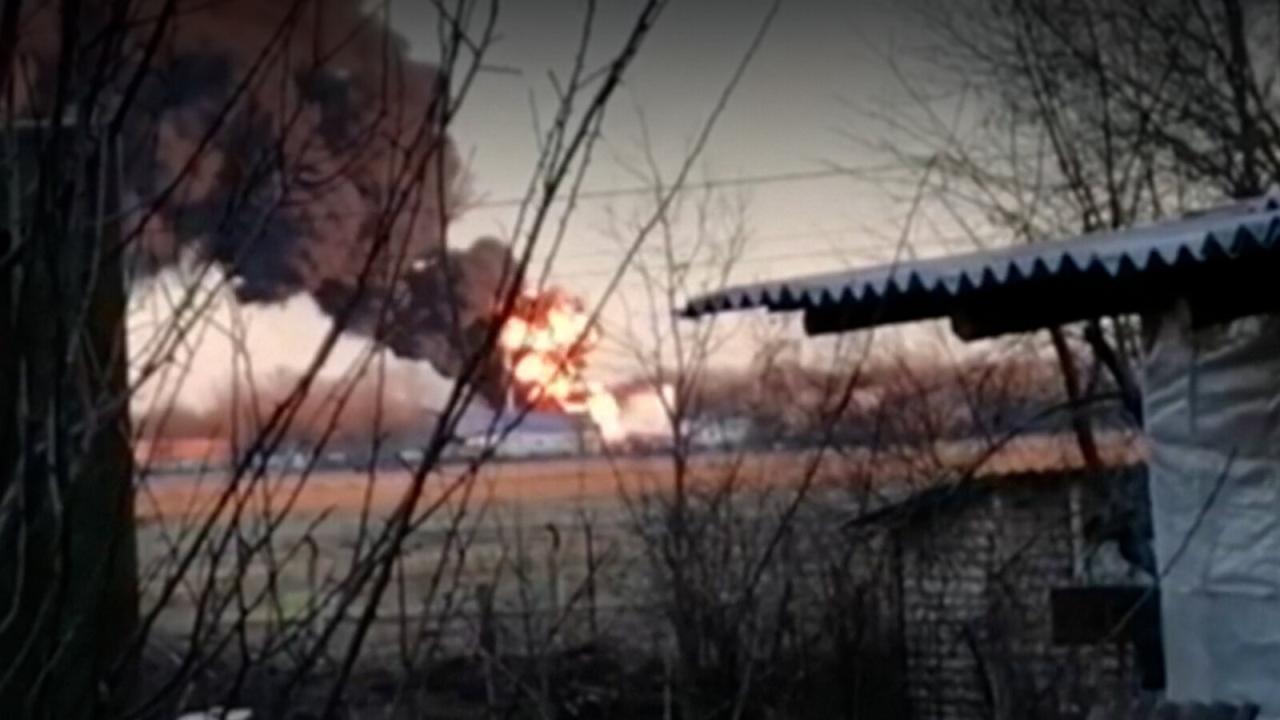Ukraine drone attack on russia – Ukraine drone attacks on Russia represent a significant escalation in the ongoing conflict. These attacks, utilizing a variety of drone technologies, target critical infrastructure and military assets within Russia, prompting a complex response and raising significant international concerns. The strategic implications are far-reaching, impacting military operations, civilian morale, and the global geopolitical landscape. This analysis delves into the various facets of these attacks, from the types of drones employed to the international repercussions.
The frequency and sophistication of these drone strikes have increased over time, showcasing Ukraine’s evolving capabilities in asymmetric warfare. The effectiveness of these attacks varies depending on the target, the type of drone used, and Russia’s countermeasures. The conflict’s narrative is further complicated by the use of drone footage in propaganda campaigns by both sides, shaping public perception and influencing international opinion.
Ukrainian Drone Attacks on Russia: Ukraine Drone Attack On Russia
The use of drones by Ukraine in attacks against Russian territory represents a significant escalation in the ongoing conflict. These attacks, while varying in scale and success, have had a multifaceted impact on the war, affecting military operations, civilian morale, and international relations. This analysis delves into the types of drones employed, the targets selected, the consequences of these actions, Russia’s responses, and the broader international implications.
Types of Drones Used in Attacks

Ukraine has utilized a variety of commercially available and modified drones in its attacks against Russia. These range from smaller, less sophisticated models suitable for reconnaissance and smaller-scale attacks to larger, more advanced systems capable of carrying heavier payloads. The effectiveness of these drones varies significantly depending on their capabilities, the sophistication of their modifications, and the specific circumstances of each attack.
Technological advancements, including improved range, payload capacity, and navigation systems, have been observed in the drones used over time.
| Drone Model | Range (km) | Payload (kg) | Speed (km/h) |
|---|---|---|---|
| Example Drone A (Modified Commercial) | 50-100 (estimated) | 5-10 (estimated) | 80-120 (estimated) |
| Example Drone B (Modified Commercial) | 150-200 (estimated) | 15-20 (estimated) | 100-150 (estimated) |
| Example Drone C (Potentially Military Grade) | 300+ (estimated) | 25+ (estimated) | 180+ (estimated) |
Note: Specific details on drone models and capabilities are often kept confidential for operational security reasons. The data presented here is based on available open-source information and may represent estimates.
Recent Ukrainian drone attacks on Russian territory have highlighted the increasing sophistication of unmanned aerial vehicles in modern warfare. The effectiveness of these drones is partly due to advancements in drone technology, such as those offered by companies like sky elements drones , which are known for their advanced capabilities. These technological leaps, however, also raise concerns about the potential escalation of conflict and the need for international dialogue on drone regulations.
Targets of Drone Attacks

Ukrainian drone attacks have targeted a range of military and civilian infrastructure within Russia. The strategic significance of these targets varies, but generally aims to disrupt Russian military operations, logistics, and morale. Some attacks have successfully damaged or destroyed military equipment, while others have resulted in minimal impact or been intercepted. The geographic distribution of attacks has been largely concentrated in areas bordering Ukraine and regions with strategic military value to Russia.
Recent drone attacks on Russian territory have highlighted the evolving nature of modern warfare, showcasing both the potential and the inherent risks of unmanned aerial vehicles. This underscores the importance of reliable drone technology, a point tragically illustrated by the recent orlando drone show malfunction , which serves as a stark reminder of the complexities involved in large-scale drone operations.
The Ukrainian attacks, while effective in some instances, also point to the need for robust systems to prevent malfunctions and unintended consequences.
A textual representation of the geographic distribution could depict a map of Russia with highlighted areas showing the frequency of drone attacks, with higher concentrations indicated by denser shading or more prominent markers. For example, areas near the Ukrainian border, Crimea, and major Russian military bases could be shown as having a higher frequency of attacks. Successful attacks might be denoted with a different marker or color than unsuccessful ones.
Impact and Consequences, Ukraine drone attack on russia
The consequences of Ukrainian drone attacks on Russia are multifaceted, impacting military infrastructure, morale, and the economy. The long-term effects are still unfolding, but the short-term consequences have been evident.
Recent drone attacks on Russian territory by Ukraine have raised significant geopolitical concerns. The incidents highlight the evolving nature of modern warfare, and the potential for unintended consequences, much like the unfortunate florida drone accident underscores the importance of responsible drone operation. Such accidents, however, pale in comparison to the scale and impact of the ongoing conflict in Ukraine.
- Short-term impacts: Damage to military equipment and infrastructure, disruption of military operations, increased security measures, potential casualties.
- Long-term impacts: Deterioration of Russian military capabilities, potential economic strain due to increased defense spending, psychological impact on Russian forces and civilians, escalation of the conflict.
Russian Response and Countermeasures

Russia has implemented various countermeasures to defend against Ukrainian drone attacks. These measures have evolved over time, reflecting the ongoing technological arms race.
- Early Responses: Primarily focused on reactive measures such as deploying air defense systems and ground-based anti-drone weaponry.
- Evolving Countermeasures: Development and deployment of more advanced electronic warfare systems, improved air defense networks, and increased intelligence gathering to detect and intercept drones.
International Implications
The use of drones by Ukraine against Russia has raised significant international concerns regarding the escalation of the conflict and the potential for wider involvement. The legality and morality of these attacks are debated by various international actors.
| Actor | Stance | Actions | Concerns |
|---|---|---|---|
| NATO | Concerned about escalation | Increased military aid, intelligence sharing | Potential for miscalculation and wider conflict |
| EU | Condemnation of attacks | Sanctions on Russia, humanitarian aid | Humanitarian crisis, regional instability |
| UN | Calls for de-escalation | Peacekeeping efforts, humanitarian aid | Civilian casualties, potential for wider conflict |
Propaganda and Information Warfare
Both Ukraine and Russia utilize drone attacks as tools in their respective information warfare campaigns. The visual nature of drone footage significantly influences public perception.
Ukraine: Drone footage is often released to demonstrate the effectiveness of their attacks and to bolster morale among Ukrainian forces and citizens, while portraying Russia’s vulnerability.
Russia: Russian media often downplays the impact of drone attacks, highlighting successful interceptions and portraying them as insignificant events or even fabrications.
Ukraine’s drone campaign against Russia highlights the evolving nature of modern warfare and the increasing role of unmanned aerial vehicles in conflict. The strategic impact, international implications, and propaganda aspects all intertwine to create a complex and dynamic situation. While the effectiveness of these attacks remains a subject of ongoing debate, their significance in shaping the conflict’s trajectory is undeniable.
The future will likely see further technological advancements and countermeasures, transforming the battlefield even further.
Commonly Asked Questions
What is the estimated cost of these drone attacks to Ukraine?
Precise figures are unavailable due to security and budgetary reasons. However, the cost likely involves significant investments in drone acquisition, maintenance, operator training, and intelligence gathering.
How does Russia’s geography affect the effectiveness of these drone attacks?
Russia’s vast size presents challenges for Ukraine, requiring longer flight times and increased vulnerability to detection and interception. Conversely, Russia’s dispersed targets can create multiple points of vulnerability.
What international laws govern the use of drones in this context?
The legality of drone attacks is complex and debated. International humanitarian law prohibits attacks on civilians and civilian infrastructure. The application of these laws in the context of the conflict remains a subject of ongoing legal and ethical discussion.
